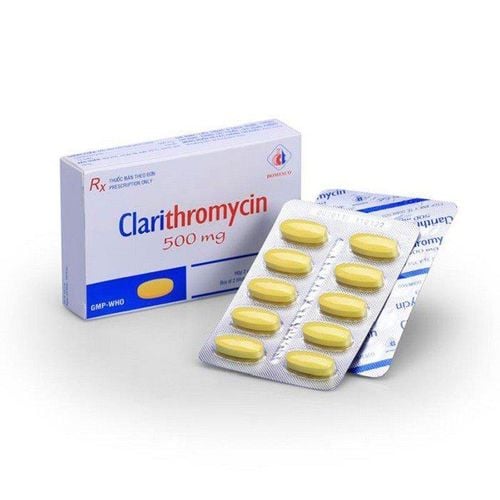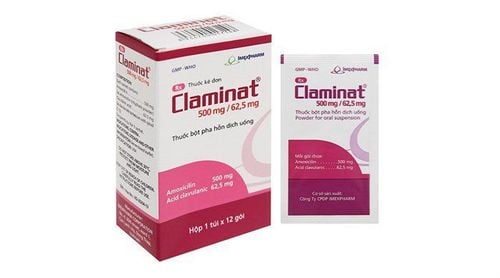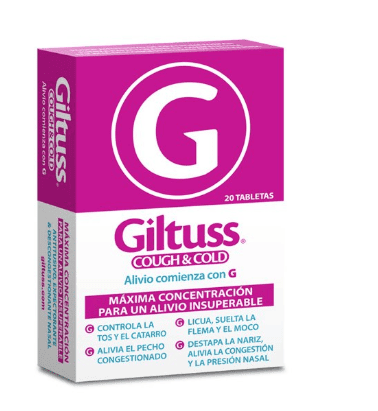This is an automatically translated article.
Clabact 500 is made in the form of tablets, with the main ingredient being Clarithromycin. The drug is used in the treatment of infections of the skin, soft tissues, respiratory tract, ... To ensure effective use and avoid unwanted side effects, patients need to take the drug by prescription or through consultation. consultation with a specialist doctor or pharmacist.
1. Uses of Clabact 500mg
What is Clabact 500 drug? The active ingredient is Clarithromycin 500mg. Clarithromycin is a semi-synthetic macrolide antibiotic from erythromycin, which increases lipophilicity, broadens the antibacterial spectrum, enhances tissue concentrations, improves stability in acidic media, increases bioavailability, and reduces side effects. on the digestive system. The component Clarithromycin is highly effective against gram-negative, gram-positive, aerobic and anaerobic bacteria.
Indications to use Clabact 500:
Replace penicillin in patients who are allergic to this drug in the treatment of bacterial infections; Treatment of upper respiratory tract infections: otitis media, sinusitis, pharyngitis; Treatment of lower respiratory tract infections: Acute and chronic bronchitis, pneumonia; Treatment of mild to moderate skin and soft tissue infections; Treatment of protozoan and Toxoplasma infections; Combination with other drugs in the treatment of peptic ulcer disease caused by Helicobacter Pylori (HP); Prevention and treatment of Mycobacterium avium infection in immunocompromised patients and prevention of opportunistic infections. Contraindications to using Clabact 500:
People who are sensitive to macrolides; Concomitant use with terfenadine, especially in case of heart disease such as: bradycardia, arrhythmia, prolonged QT interval, myocardial ischemia or electrolyte imbalance.
2. Usage and dosage of Clabact 500
How to use: Orally, patients can drink before or after meals.
Dosage: The dose and duration of treatment depend on the type of infection, the severity/severe of the disease, usually lasting 7-14 days.
Dosage of Clabact 500 in adults:
Respiratory tract, skin and soft tissue infections: The usual dose is 250mg x 2 times/day. For severe infections, the dose is 500mg x 2 times/day; Peptic ulcer - duodenum due to HP infection : 500mg x 3 times/day (depending on the combination treatment formula); Intracellular Mycobacterium avium infection: Dose 500mg x 2 times/day; Patients with severe renal impairment (with creatinine clearance less than 30ml/min): Reduce the total therapeutic dose by 1/2, the duration of drug use should not exceed 14 days. Dosage of Clabact 500 in children:
Usual dose: 7.5mg/kg body weight x 2 times/day to a maximum of 500mg, 2 times/day; Community-acquired pneumonia: 15mg/kg body weight, every 12 hours. Overdose: In case of emergency or overdose of Clabact 500, the patient should call an emergency center or go to the nearest hospital.
Missed dose: If a dose of Clabact 500 is forgotten, the patient should take it as soon as possible. If it is almost time for the next dose, the patient should skip the missed dose and take the next dose at the scheduled time.
3. Side effects of Clabact 500
Some side effects patients may encounter when using Clabact 500 include:
Common: Gastrointestinal disturbances, pseudomembranous colitis, skin itching, skin rash, urticaria, skin irritation, urticaria anaphylaxis, Stevens-Johnson syndrome ; Uncommon: Nausea, vomiting, abdominal pain, typhus fever, eosinophilia. When experiencing side effects of Clabact 500, patients should immediately notify their doctor to receive the most appropriate advice.
4. Be careful when using Clabact 500
Some notes for patients to remember before and while taking Clabact 500:
Caution when using Clabact 500 in people with impaired liver and kidney function because Clarithromycin (the main ingredient of Clabact) is excreted mainly through the liver and kidneys; Prolonged and repeated use of clarithromycin may cause the growth of fungi or bacteria that are not sensitive to the drug. If superinfection occurs, the patient should discontinue clarithromycin and receive appropriate therapy; In a small number of patients, H. pylori may become resistant to clarithromycin; Administration of clarithromycin in patients concomitantly with drugs metabolised by the cytochrome P450 system may lead to an increase in these drugs in serum; During pregnancy, use Clabact 500 only when absolutely necessary (with a doctor's prescription) and carefully monitor your health; During lactation, use Clabact 500 only when absolutely necessary (with a doctor's prescription) and carefully monitor your health.
5. Clabact 500 . drug interactions
Some drug interactions of Clabact 500 include:
Clarithromycin (the main ingredient of Clabact 500) inhibits the metabolism of carbamazepine and phenytoin, leading to an increase in their side effects; Clarithromycin inhibits the metabolism of cisapride, leading to QT prolongation, torsades de pointes, and ventricular fibrillation; Clarithromycin inhibits the metabolism of theophylline in the liver, increases the concentration of theophylline in the blood plasma; Clarithromycin reduces the absorption of the drug zidovudine; Clarithromycin and other macrolide antibiotics affect the metabolism of terfenadine, increasing its accumulation. To avoid the risk of drug interactions or adverse reactions, before using Clabact 500, patients should inform their doctors about their medical history and any other health-protective drugs/foods they are taking. At the same time, if any unusual symptoms occur, the patient should immediately notify the doctor for appropriate treatment advice.
Follow Vinmec International General Hospital website to get more health, nutrition and beauty information to protect the health of yourself and your loved ones in your family.
Please dial HOTLINE for more information or register for an appointment HERE. Download MyVinmec app to make appointments faster and to manage your bookings easily.













